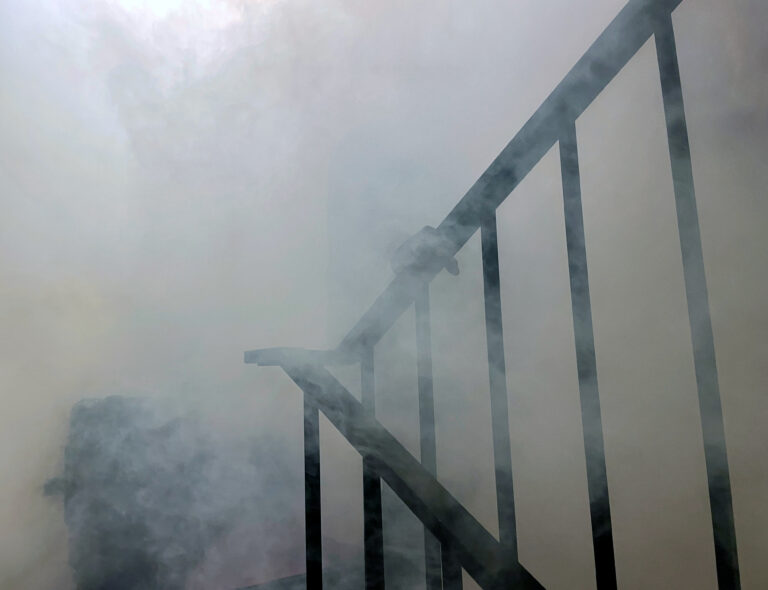For the Urbana and Champaign fire departments, extinguishing fires in multi-story buildings will be a breeze after the departments completed their joint high-rise training last week at Sherman Hall in Champaign.
The bi-annual training took place from July 14 to 16. During it, the departments split into smaller crews and rotated through three stations that taught them skills on how to combat fires in high-rise buildings – or buildings with four or more floors.
One station taught the firefighters how to use fans to clear smoke out of stairwells. Another showed them more efficient ways to move fire hoses up flights of stairs, and the third drilled them on the different ways to use fire pumps to supply water to high-rises.
Champaign’s Deputy Chief of Operations Gary Gula said the two departments regularly team up to respond to calls on the University of Illinois campus, which is why they train together often.
“Probably 90% of what we do as a department – any fire department – is training because we have to be prepared to go to anything at a moment’s notice,” Gula said. “And we have no idea what’s coming in, and we don’t know when the call comes in what we’re going to.”
Lieutenant Trent Short from the Urbana department shared a similar sentiment. For multi-story buildings, he said the two departments work together because extinguishing high-rise fires requires more manpower than those at single-family houses.
“With high-rise training, our water supply situations are different on how we get water to each individual floor versus a single-family home,” Short said. “It’s like being at a residential fire sometimes times 10, so as many people as we can put on the scene, the better off we are.”
Deputy Chief Demond Dade of the Urbana Fire Department said there are special considerations for extinguishing fires in high-rises, including the additional time it takes to move supplies to the floor where the fire is.
In single-family house fires, Dade said it takes the firefighters several minutes to get the hose line in its proper position for operation, but he said this time is exacerbated in high-rise buildings.
“If you’re on the 15th floor and it’s going to take two minutes per floor to get there and get all your resources there, you’re looking at possibly anywhere from 15 to 30 minutes additional time just to get a hose line in place,” Dade said.
Gula said high-rise training sessions are especially important because of how quickly fires can spread in multi-story buildings, which can make it more difficult to locate where the fire is.
“We have huge challenges against us as the fire service to get to the problem depending on where it’s at,” Gula said. “So don’t store anything in the stairways, keep the stairways clear. That’s our avenue, our artery, our main way to get to the problem.”
The biggest challenge in dealing with high-rise fires is evacuating the building and ensuring the well-being of those inside.
“Priority number one is life safety,” Gula said. “We want to get people out of the building because life is number one.”
Short said the Urbana and Champaign departments find and implement techniques from other fire departments across the country, which is why the high-rise sessions improve each year.
“We try to take some of those lessons learned and bring them here to us and then kind of adopt them to our way of life here,” he said. “So every year they get a little bit better, with more knowledge and so on.”

